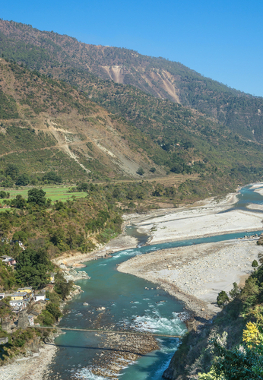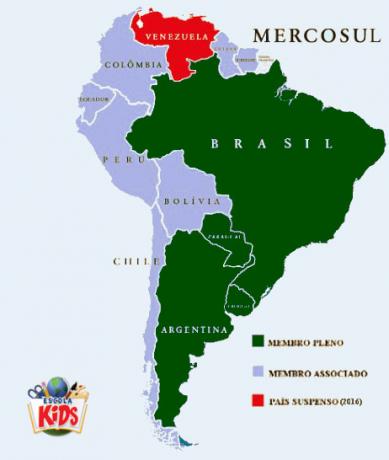THE São Francisco River Basin it is one of the most important hydrographic basins in Brazil.
It is located in the Northeast, Southeast and Center-West regions of the country and receives this name since the most important river that composes it is the São Francisco River.
Characteristics and Importance

The São Francisco River Basin is entirely Brazilian and occupies an area of approximately 640 thousand km², which corresponds to almost 8% of the national territory.
It covers several states in the country: Minas Gerais, Goiás, Bahia, Pernambuco, alagoas, Sergipe and Federal District.
The São Francisco River, popularly called “Velho Chico” has an extension of approximately 2,800 km and due to its size is divided into 4 sections: Upper, Middle, Sub-Middle and Lower São Francisco.
It is considered a plateau river that rises in the Serra da Canastra, in Minas Gerais, and flows in the direction South-North of the country, crossing the Northeastern Sertão, the driest region in Brazil, flowing into the Ocean Atlantic.
Besides the Caatinga, the São Francisco River Basin softens the Brazilian biomes of the thick and of the Atlantic forest, and presents regions of humid, arid and semi-arid climates.
The São Francisco River is a perennial river, that is, even in times with little rain, it does not dry out.
This makes navigation possible, although many environmental problems that are currently suffering, have left some parts impossible, such as silting. That is, the loss of riparian forests that enable the accumulation of solid waste.
It is worth remembering that the São Francisco River Basin is formed by the São Francisco River and its 158 tributaries, of which 90 are perennial rivers and 68 of them are temporary rivers.
The expansion of urbanization and industrialization, deforestation, fires and activities such as mining, agriculture, livestock and fishing, has resulted in a great environmental impact for the region, from the pollution of waters, siltation of rivers, loss of biodiversity, lack of basic sanitation for the populations that live there, among others.
The São Francisco River Basin has an enormous economic, social and cultural importance for the region, since its waters serve to supply and provide energy for a large part of the surrounding population (about 520 municipalities), in addition to serving as transport and communication between cities.
In such a way, in the São Francisco River Basin many plants were installed as it presents many mighty rivers with several waterfalls, which are used to generate energy.
The Hydroelectric Power Plants that deserve mention are: Três Marias, Queimado, Paulo Afonso, Sobradinho, and Luiz Gonzaga (Itaparica), Xingó and Moxotó.
Learn more about the topic in the articles: Hydrographic basin and Hydrography of Brazil.
Transposition of the São Francisco River
O São Francisco River it is one of the most important rivers in the country, with more than 2,000 km of navigable stretch.
The São Francisco River Transposition is a Federal Government project, which aims to create 600 km of canals approximately, in order to supply various regions in the northeast of the country that suffer from the phenomenon of dry.
Conceived in 1985, the project's work is divided into two main axes for water collection: the North Axis, in the city of Cabrobó and the East Axis in the city of Floresta.
rivers
The main rivers that make up the São Francisco River Basin are:
- São Francisco River
- Rio das Velhas
- Abaete River
- Indaiá River
- river currents
- Jequitaí River
- Jequitibá River
- big River
- Rio Verde Grande
- Rio Preto
- Rio Pardo
- Paracatu River
- Paraopeba River
- Rio Carinhanha
- Urucuia River



